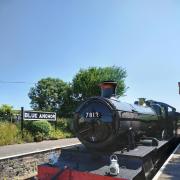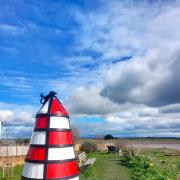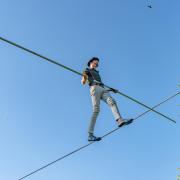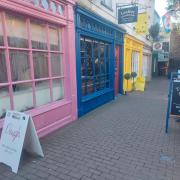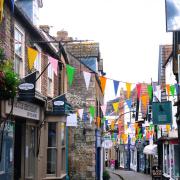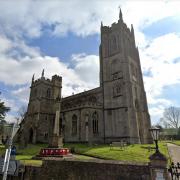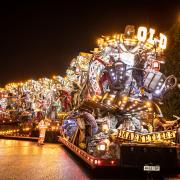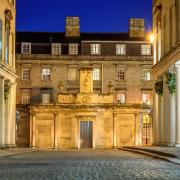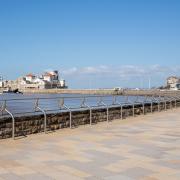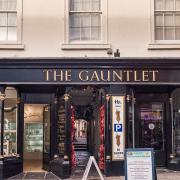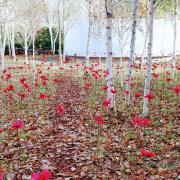Military historian Richard Pursehouse reveals the significant connection between a Somerset centenarian and a famous Westminster grave

The arrival of staff from a military museum in Lichfield at her 100th birthday celebration marked a poignant moment for Sandford resident Laetitia Hardie.
Mrs Hardie first made contact with the Staffordshire Regiment Museum in January, through her daughter Olivia. She had wanted a photograph of her father’s medals which had been deposited within their collection. She’d seen the medals many years before, but was now unable to make the journey.
While arranging to meet her request, museum curator Danielle Crozier realised the uniqueness of Laetitia’s father, a North Staffordshire officer, and decided to make a personal trip down to Somerset with his medals.
Laetitia’s father was Brigadier General Louis John Wyatt, D.S.O, D.L. He first joined the 1st Battalion North Staffordshire Regiment in 1895 from the militia. As a major he was with the battalion when they first disembarked in France on 19 September 1914.
Between 1915 and late 1917, he was attached to the 4th (Hallamshire) Battalion, York and Lancaster Regiment before returning to the 1st Battalion the North Staffordshire Regiment in January 1918 as its commanding officer.
He served with them until he was appointed director of graves, registrations and enquiries in France at the end of the war. By 1920 he had been promoted to General Officer in Command of British Troops in France and Flanders.

But in 1920 he became faced with a heavy and sombre task, one which would change the way the country mourned those who died in the First World War and later conflicts.
In August 1920, just three months before the dedication of the Cenotaph in London, an idea was put forward by the Reverend David Railton MC to the Dean of Westminster Bishop Ryle: would Ryle perhaps consider burying the body of an unknown soldier within Westminster Abbey?
The dean’s response was positive, although King George V was initially cautious in response. Incredibly for such a concept the War Office, Prime Minister Lloyd George and his Cabinet and the King agreed within three weeks, with David Lloyd George making an announcement in the House of Commons on the plan. The King changed the title to Unknown Warrior to represent all the armed services.
Certain stipulations were agreed – the soldier must be unequivocally unknown so that thousands of relatives could think he might be theirs, he must be British and several bodies would be exhumed, all of which had to be from early in the war to ensure they were sufficiently decomposed and therefore unidentifiable.
The man tasked with selecting the body to be returned to England was Brigadier General L J Wyatt.
In November 1939, on the 20th anniversary of the laying to rest in Westminster Abbey, in an open letter to The Daily Telegraph he published his account of these historic events:
“In October I received notification from the War Office that King George V, had approved the suggestion, and the proposal that the burial should be in Westminster Abbey on November 11th. I issued instructions that the body of a British soldier, which it would be impossible to identify, should be brought in from each of the four battle areas – the Aisne, the Somme, Aras and Ypres, on the night of November 7th, and placed in the chapel of St Pol. The party bringing in each body was to return at once to its area, so that there should be no chance of their knowing on which the choice fell.
Reporting to my headquarters office at St Pol at midnight on November 7, Colonel Gell, one of my staff, announced that the bodies were in the chapel and the men who had brought them had gone. With Colonel Gell, passing the guard which had been specially mounted, I thereupon entered the chapel.
The four bodies lay on stretchers, each covered by a Union Jack; in front of the altar was the shell of the coffin which had been sent from England to receive the remains. I selected one, and with the assistance of Colonel Gell, placed it in the shell; we screwed down the lid. The other bodies were removed and reburied in the military cemetery outside my headquarters at St Pol.
I have no idea even of the area from which the body I selected had come; no one else can know it.”
Laetitia explained that her father rarely talked about his war time experiences or his role in selecting the body of the Unknown Warrior.
He would most certainly have felt the gravity of the task and had a strong commitment towards the welfare of his men, being a founding member of the North Staffordshire Regiment Association.
During the Second World War Laetitia volunteered for the Red Cross as a Voluntary Aid Detachment nurse and became an expert in anti-gas treatment. She explained to Danielle that her father had abhorred the use of gas on the Western Front and the horrific injuries it caused to the men.
Danielle is working with Lichfield Cathedral for an Armistice exhibition this month, a Light and Sound experience that will include all eight of the Staffordshire Regiment Museum’s Victoria Crosses.



